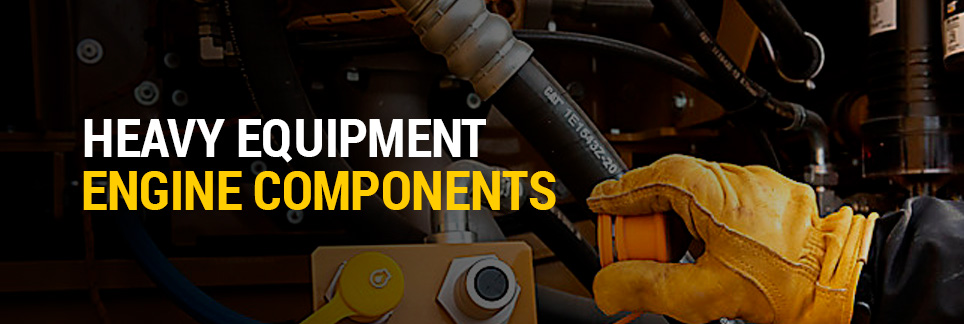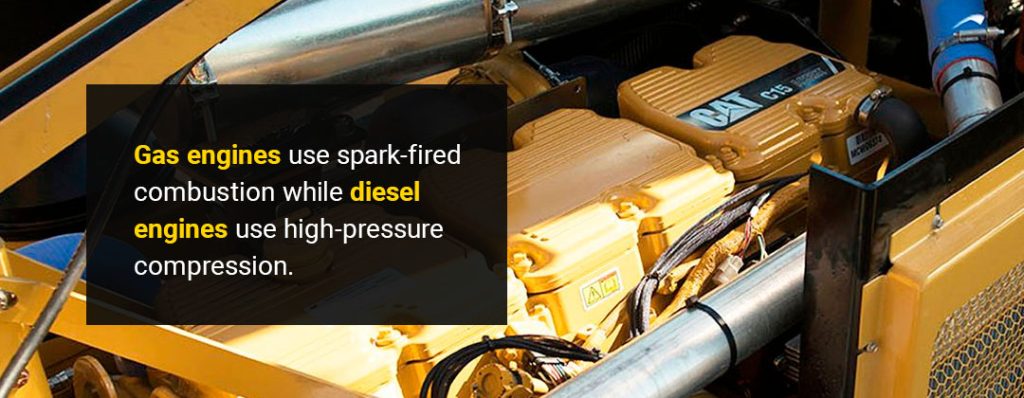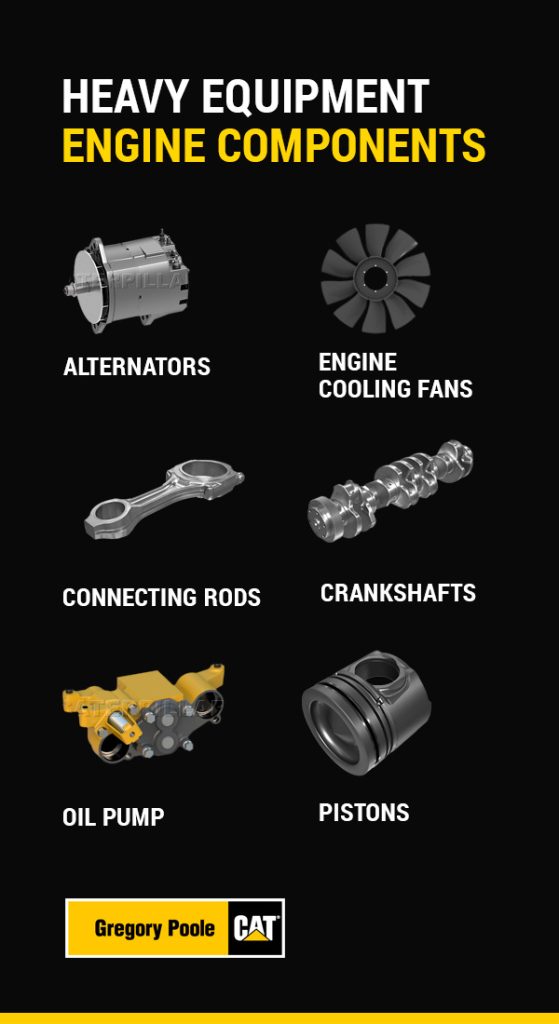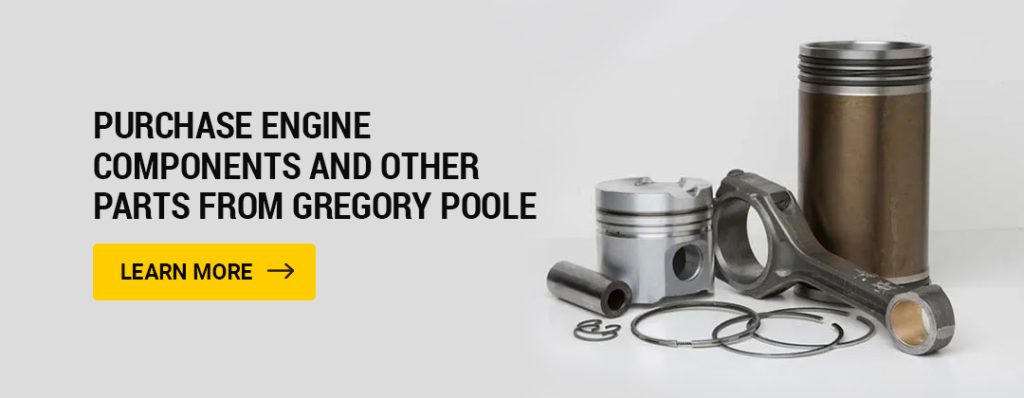
If you use heavy equipment for your projects, you understand how invaluable these machines are. They can also be a major investment. You want to know how heavy equipment engine components function so you can maintain them in their best condition. Keeping your heavy equipment in good condition has many advantages, such as your equipment serving you better and longer. Proper maintenance also reduces costly breakdowns and downtime.
Since the engine powers your equipment, it should be at the top of your priority list when it comes to inspections, diagnosis, repairs and replacements. Compromising on the quality and health of any of your heavy equipment engine parts could lead to serious failures in the future. Learn more about engine components to help make the right decisions on quality parts. At Gregory Poole, we offer quality equipment and parts from some of the most reliable brands in the industry.
Heavy equipment machines are powerful and can handle demanding tasks in industries like construction and forestry. Their work conditions require powerful engines that burn gasoline or diesel to generate mechanical energy. Most heavy equipment machines run on diesel engines for many reasons, but primarily because they need greater torque. Diesel engines are more powerful and fuel-efficient than gasoline counterparts of similar sizes. As a result, heavy machinery such as excavators, dozers, loaders and feller bunchers generally use a diesel engine to supply the necessary power.

Both gas and diesel engines use internal combustion to turn chemical energy into mechanical energy. The engines turn fuel into energy through a series of combustion, but the process is not the same. Gas engines use a spark plug to ignite a mixture of fuel and air in the combustion chambers. Diesel engines compress air at high pressure before injecting fuel, which explodes within the combustion chamber. So, one of the main differences between the two engine types is that gas engines use spark-fired combustion while diesel engines use high-pressure compression.
We’ve described both engine types, but why are diesel engines preferable for heavy equipment?
Heavy-duty machines have many components that work together for the engine to operate. In this guide, we look at key components of heavy equipment engines.
Diesel-powered machines rely on alternators to generate the electrical energy necessary to operate the machine and charge its battery. If an alternator fails, the electrical charge that keeps the engine running will be unavailable, meaning the starter motor responsible for kicking off the combustion process won’t function.
The starter and electrical systems rely on the alternator because it converts alternating current (AC) into an electrical charge. This process occurs when your equipment’s engine runs, rotating a belt connected to the alternator’s rotor. As a result, the alternator works in sync with the engine to produce electricity required by other key systems, like the ignition and fuel injection systems. It also charges your machine’s battery.
A good alternator ensures smooth operations, but if it’s faulty, you’ll notice signs such as warning lights, electrical failures, flickering or dimming lights, and poor engine performance.

Proper alternator care and maintenance involve repairs and replacements. Newer alternators may need fewer repairs to improve their service lives. However, upgrading your heavy equipment parts may be more economical. You may want to replace your alternator if it fails repeatedly after several repairs.
In addition to the performance components, your equipment’s engine has a cooling system that controls engine temperature and protects internal parts. Heavy machinery generates a lot of heat. The cooling fans dispel that heat, prevent excessive heat buildup and maintain the proper temperature for normal engine operations.
An issue with the cooling fans can cause the machine to overheat, impacting its longevity and performance. You’ll notice signs like a rising temperature gauge, overheating warning light and steam around the engine compartment.
Proper care and maintenance of engine cooling parts involve a thorough maintenance schedule. A technician inspects the fan blades, motors, shrouds and other parts for signs of wear. Cleaning the radiator and the surrounding areas will also help maintain proper airflow and cooling performance.
Connecting rods are attachments found in each cylinder in an engine, each attached to a shared crankshaft. These rods convert each piston’s reciprocating motion into rotational motion rapidly, transferring force from the piston to the crankshaft.
A connecting rod features several parts critical to its function and the function of the entire engine. These parts include:
Issues with connecting rods include bending and cracking due to high stress and bearing wear. These may lead to failure signs such as engine misfires, knocking sounds, engine vibrations and overheating. Proper care and maintenance of connecting rods involve regular lubrication and inspections by a technician. Since connecting rods bear intense stress, it’s best to replace them if you notice signs of wear or damage.
The crankshaft is one of the most important parts of heavy equipment engines since it converts the reciprocating motion of the pistons into rotational motion that powers the wheels and other systems. The structure of the crankshaft is crucial to its function, and its components include:
Crankshaft failure usually occurs due to engine overload, temperature fluctuations that cause wear and lack of lubrication. If you notice unusual engine noises, excess smoke, overheating or reduced engine performance, there could be an issue with the crankshaft. Proper lubrication will help keep a crankshaft in good condition. Still, replacing a worn or broken crankshaft is best to avoid possible engine damage. When it comes to heavy equipment engine parts, you want to select the highest quality parts to ensure smooth performance and longevity.
The oil pump is at the core of your heavy-duty engine’s oil circulation system. Its main function is lubrication, as it forces oil through the oil galleries at high pressure into all the engine’s moving parts. If the oil level is too low, your engine will experience additional friction, and multiple parts will begin to fail.
Over time, oil pumps can show signs of damage or wear and tear, such as overheating engines, unusual noises and flashing of the engine light indicator. However, you may want to call a certified heavy equipment technician for proper engine diagnosis because these symptoms could also mean something else. Maintain the pump in good condition by paying attention to the following:
Engine pistons are small but critical parts of your heavy equipment engine. They convert burned fuel into energy and transfer the force necessary for the vehicle to move. As gas and pressure from the burned fuel expand and push on the piston, the rapid upward and downward motions rotate the crankshaft, generating the mechanical energy needed to move the wheels. Due to the importance of pistons in sucking and compressing air and fuel mixture, failure may cause many engine complications. Look out for these signs of piston failure:
Keeping up with maintenance schedules, using quality fuel and handling your heavy equipment well can help preserve engine pistons. However, if there is wear or damage, get a technician to disassemble and replace the piston.
The basics of how each part of a diesel engine comes together to run the engine and operate the vehicle are universal. Heavy-duty machines generally have four-stroke cycle engines, meaning that the engine undergoes four piston strokes to complete a cycle.

Here’s an overview of how these processes allow the engine to use different components to work:
While heavy engine components are robust, their efficiency and durability are affected by factors like poor quality and lack of proper maintenance. To improve equipment efficiency through engine parts, consider these tips:
Investing in engine upgrades and new parts can improve overall engine performance, resulting in better fuel consumption, more torque and improved acceleration. Be sure to invest in quality parts for strategic engine upgrades.
Maximum efficiency is necessary for worksites using heavy equipment. Create a quality maintenance plan to ensure components remain in good condition, improving equipment efficiency. A quality maintenance plan should include regular, recommended maintenance and a preventive maintenance strategy. With preventive maintenance, you don’t wait for parts to fail. You can track the performance of engine components using technologies like Internet of Things (IoT) diagnostics.

Our detailed overview of heavy equipment engine parts demonstrates each component’s role in maintaining engine efficiency and proper equipment operations. If you’re a contractor or fleet manager, understanding how engine components work can help you monitor their performance, replacing worn parts with new ones before a major breakdown happens.
Since heavy equipment breakdowns are costly, you want to invest in reliable engine parts from a trusted dealer. Gregory Poole is a reputable equipment company with over 70 years of industry experience. We are a committed provider dedicated to providing quality equipment and parts, superior services and continued customer support. Get in touch today to speak with an expert!